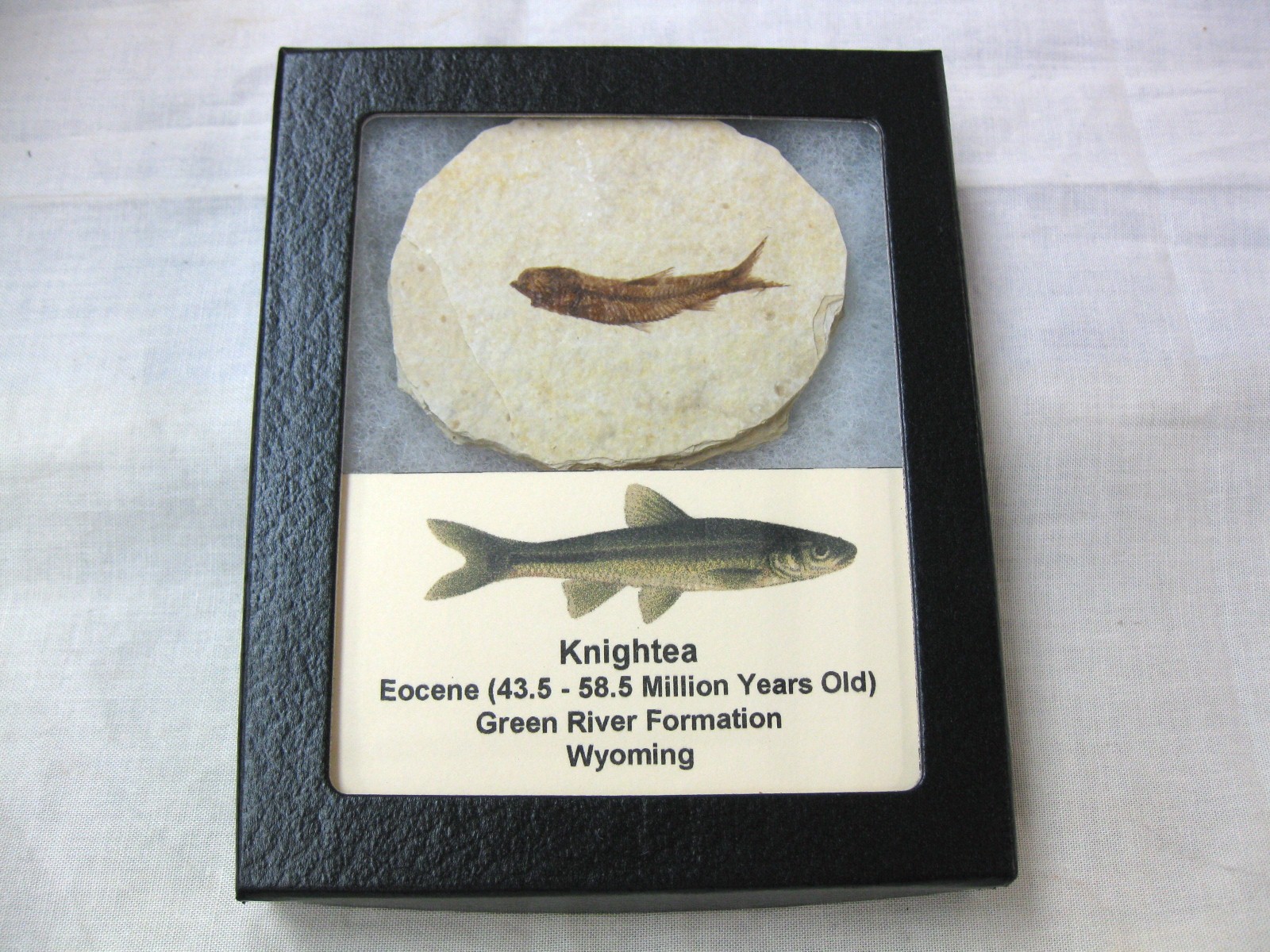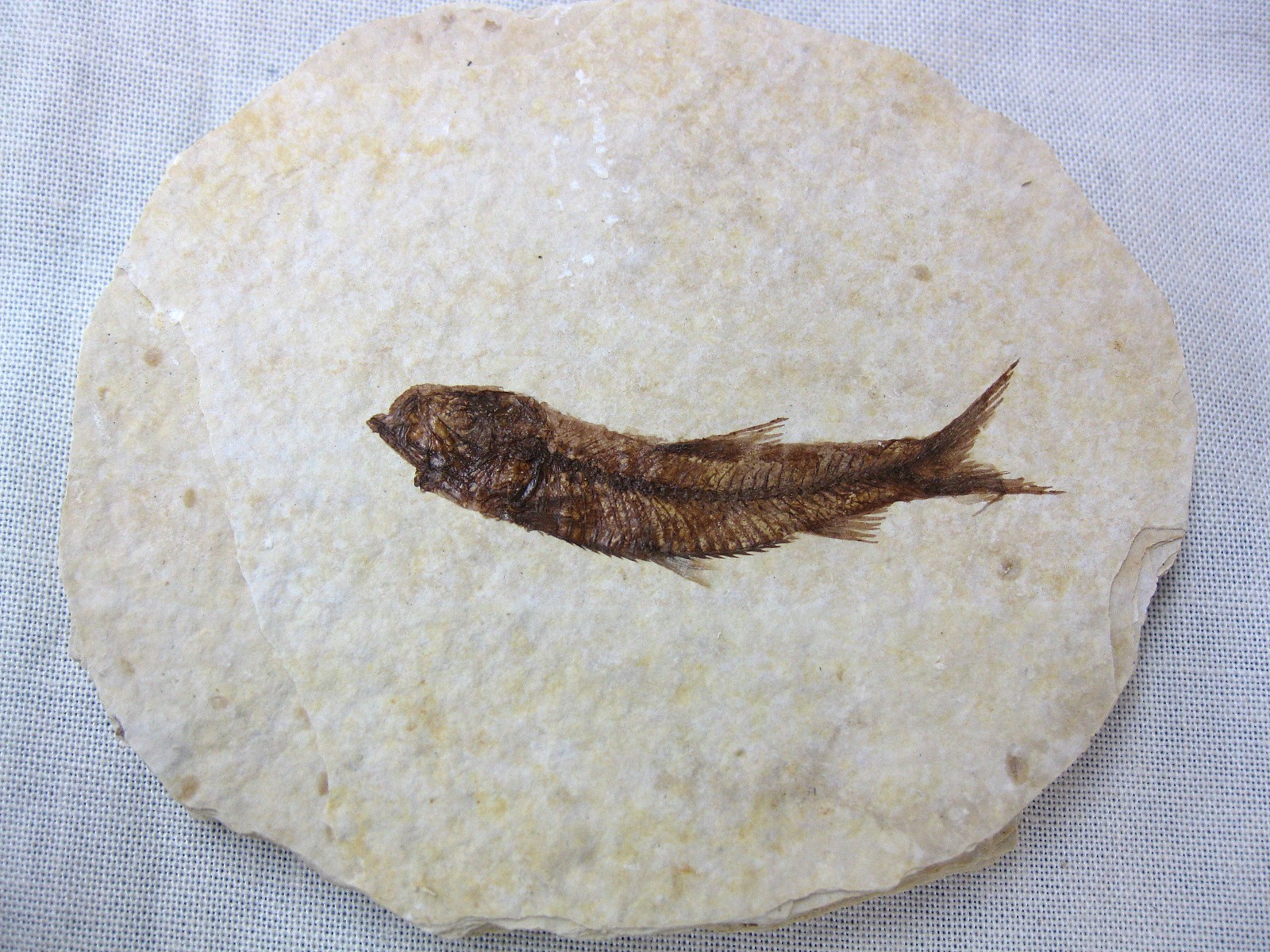Description
- Knightea
- Eocene Age
- Green River Formation
- Wyoming
- This specimen will come in the 4.5″ x 5.5″ Riker Mount with Label as Shown. These fish come from the “Split-Fish” Layer and each has had a coat of tinted preservative applied to protect the specimen and bring out the details.
Knightia is an extinct genus of clupeid clupeiform bony fish that lived in the fresh water lakes and rivers of North America during the Eocene epoch. The genus was erected by David Starr Jordan in 1907, in honor of the late University of Wyoming professor Wilbur Clinton Knight, “an indefatigable student of the paleontology of the Rocky Mountains.” It is the state fossil of Wyoming, and the most commonly excavated fossil fish in the world. Knightia belongs to the same taxonomic family as herring and sardines, and resembled the former closely enough that both Knightia alta and Knightia eocaena were originally described as species of true herring in the genus Clupea. A small schooling fish, Knightia made an abundant food source for larger Eocene predators. The Green River Formation has yielded many fossils of larger fish species preying on Knightia; specimens of Diplomystus, Lepisosteus, Amphiplaga, Mioplosus, Phareodus, Amia, and Astephus have all been found with Knightia in either their jaws or stomach.
The Green River Formation is an Eocene geologic formation that records the sedimentation in a group of intermountain lakes in three basins along the present-day Green River in Colorado, Wyoming, and Utah. The sediments are deposited in very fine layers, a dark layer during the growing season and a light-hue inorganic layer in the dry season. Each pair of layers is called a varve and represents one year. The sediments of the Green River Formation present a continuous record of six million years. The mean thickness of a varve here is 0.18 mm, with a minimum thickness of 0.014 mm and maximum of 9.8 mm.
The sedimentary layers were formed in a large area named for the Green River, a tributary of the Colorado River. The three separate basins lie around the Uinta Mountains of northeastern Utah: an area in northwestern Colorado east of the Uintas a larger area in the southwest corner of Wyoming just north of the Uintas known as Lake Gosiute the largest area, in northeastern Utah and western Colorado south of the Uintas, known as Lake Uinta Fossil Butte National Monument in Lincoln County, Wyoming is in a part of the formation known as Fossil Lake because of its abundance of exceptionally well preserved fish fossils.






